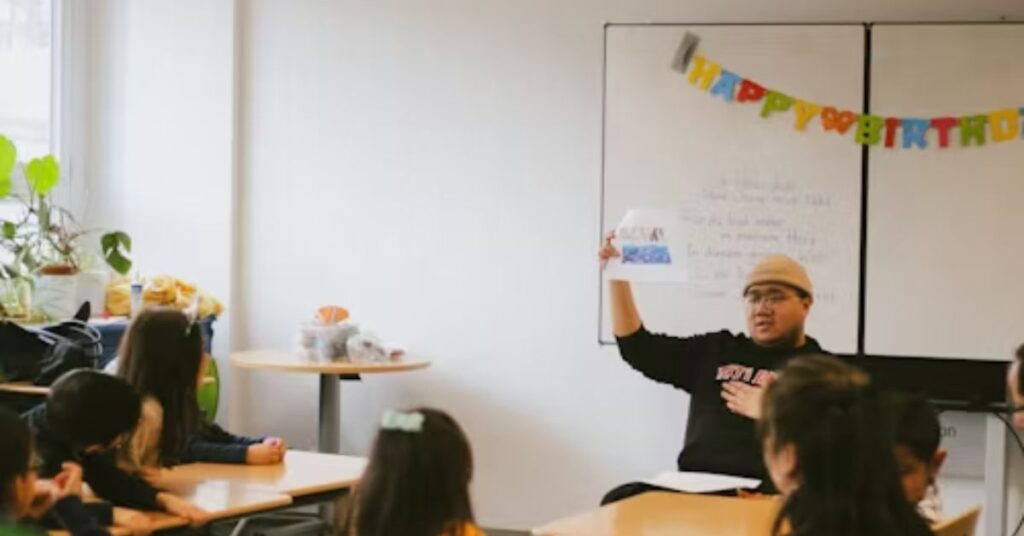If you’re a parent, student, or educator, you’ve likely heard the phrase “Meet the Teacher.” Traditionally viewed as a brief evening event before the school year kicks off, this concept is rapidly evolving into a more meaningful, interactive, and personalized experience. In today’s dynamic educational environment, “Meet the Teacher” isn’t just about name tags, syllabi, and classroom rules. It’s about building trust, establishing communication lines, and humanizing both sides of the desk—educator and student. This article explores what the modern “Meet the Teacher” should look like, why it matters more than ever, and how schools can reimagine this experience to make it impactful, inclusive, and memorable.
The Origins and Evolution of “Meet the Teacher”
Historically, “Meet the Teacher” nights were often rushed and formality-driven, consisting of quick handshakes, a walkthrough of the curriculum, and maybe a sign-up sheet for volunteers. These events focused more on logistical introductions rather than emotional or community building.
But education, like society, is undergoing rapid transformation. Today’s families are more diverse, time-constrained, and digitally connected. Consequently, the one-size-fits-all open house no longer serves the layered needs of modern school communities. Parents want real insight into who their children are learning from, students want to feel seen, and teachers want to start the year with supportive, cooperative relationships.
Rethinking First Impressions
When done well, “Meet the Teacher” becomes the first step in a year-long partnership. It’s an opportunity to:
- Establish mutual respect between educators and families.
- Introduce classroom values beyond just academic goals.
- Build a bridge between home and school cultures.
- Set the tone for open communication and psychological safety.
Instead of bullet-point agendas and printed PowerPoints, the event can include student-led tours, teacher storytelling, and informal conversations that go deeper than the typical, “Here’s the syllabus.”
Building Emotional Trust From Day One
Trust doesn’t come from information alone—it stems from connection. A child’s emotional safety plays a foundational role in academic success, and that begins with how parents feel about the person entrusted with their child’s daily care.
When families walk into a classroom and are greeted not just by a teacher but by a listener, a partner, and a real human being, their mindset shifts. They feel invited, not instructed. They feel valued, not judged. That trust pays dividends throughout the school year when challenges arise, when celebrations happen, or when misunderstandings need to be cleared.
A Modern Blueprint for “Meet the Teacher”
To bring this vision to life, schools can consider a new structure for their events. Here’s a refreshed model:
Reimagined Meet the Teacher Experience
Welcome Station
Student greeters offer programs and introduce visitors to the layout.
Interactive Classroom Tour
Each station in the room highlights a specific part of the curriculum with visuals and student input.
Teacher Talk
Short personal narrative from the teacher about their “why,” teaching philosophy, and hopes for the year.
Student Voice Table
Pre-recorded videos or messages from students about what they enjoy or expect in class.
Community Wall
A place where parents can write a note, share hopes, or leave contact details.
Feedback & Coffee Corner
A relaxed spot for feedback forms and casual conversation with staff over coffee or tea.
The Role of Technology in Expanding Access
In-person events are ideal—but they are not always inclusive. Work schedules, transportation barriers, or language differences often prevent attendance. Schools can offer digital “Meet the Teacher” experiences through:
- Interactive websites with teacher bios, classroom photos, and welcome messages.
- Live Zoom sessions for virtual meet-and-greets.
- Translated video subtitles for multilingual families.
- Short podcasts or audio messages from the teacher.
By widening the access points, schools remove unintentional obstacles and affirm that every family is a vital part of the learning community.
Bridging Cultural Differences
For many immigrant or culturally diverse families, stepping into an American classroom can be unfamiliar—even intimidating. “Meet the Teacher” night, then, becomes more than just informative; it becomes a cultural handshake.
Schools can honor this by:
- Incorporating multilingual welcome signs and interpreters.
- Including cultural awareness questions in conversations.
- Displaying global themes or books that reflect class diversity.
- Inviting parents to bring elements from their culture into the classroom, from music to food or stories.
When families feel that their culture is not only accepted but celebrated, they engage more fully.
Classroom Design: Creating a Welcoming Environment
A classroom is more than desks and whiteboards—it’s a living space. During “Meet the Teacher,” the physical space should invite exploration and comfort. Consider:
- Warm lighting and colorful displays.
- A photo corner featuring student faces (if already known) or a family board.
- Class pets, if any, with name cards and mini-bios.
- Interactive elements like question jars or a mini puzzle for families to solve together.
These subtle cues tell families: “This is a space where your child is not just taught—but known.”
Questions Parents Often Want Answered (But Don’t Always Ask)
A key part of the “Meet the Teacher” experience is proactively answering the questions families may hesitate to voice. Here are some examples:
- How can I reach you if my child is struggling emotionally?
- What do you do if my child breaks a rule?
- How do you celebrate birthdays or holidays?
- What’s your policy on homework?
- How do you support students with different learning styles?
Teachers who transparently answer these in their opening remarks or materials send a message: “I’ve got you.”
Making Students Central to the Experience
Too often, “Meet the Teacher” feels like a parent-teacher conference. But students should be at the heart of this interaction. Letting students introduce their own work, walk their families through the classroom, or share a pre-written “about me” letter not only builds confidence but also shows parents what kind of communication the teacher fosters.
Building Community Beyond the Classroom
The best “Meet the Teacher” nights lead to more than one strong connection—they spark networks. Consider:
- Parent meet-and-greet mixers.
- Sign-ups for interest-based parent groups (STEM, gardening, book club).
- Class family contact list with opt-in privacy.
- Follow-up community events: picnics, movie nights, or themed potlucks.
These build camaraderie, which supports student morale and teacher wellbeing alike.
Challenges and Pitfalls to Avoid
Reimagining a meaningful “Meet the Teacher” night isn’t without its hurdles. Some common challenges include:
- Information overload: Trying to explain every detail in one evening.
- Lack of accessibility: Not accounting for families with disabilities or language barriers.
- Teacher burnout: Expecting staff to go above and beyond without support or time.
- Superficial connection: Prioritizing logistics over authentic interaction.
Schools must plan with intention, ask for feedback, and give teachers the resources and time needed to prepare meaningfully.
The Power of Storytelling
One often overlooked tool in successful “Meet the Teacher” events is storytelling. When a teacher shares a personal story—why they became an educator, a lesson learned from a past student, or what excites them most about this year—they stop being a stranger. They become someone families can relate to.
Similarly, inviting families to share their stories fosters empathy. What is their child passionate about? What do they worry about? What dreams do they have for their student?
The storytelling circle humanizes everyone involved and makes the educational journey feel shared.
The Role of Administration
School leaders set the tone. When principals attend and engage in “Meet the Teacher” events, families feel that school culture matters from the top down. Administrators can:
- Greet families at the door.
- Provide welcome packets with calendars and contacts.
- Invite parents into decision-making roles.
- Publicly thank teachers for their efforts.
Leadership presence signals institutional support, which reassures families and staff alike.
A Look at the Year Ahead
“Meet the Teacher” should not be the last time families connect. To sustain momentum:
- Teachers can send monthly newsletters.
- Invite families in for guest reading or mini-lessons.
- Host “coffee with the teacher” mornings.
- Create shared student portfolios families can contribute to.
This transforms education into a collective act, where every voice is welcome and needed.
A Glimpse Into the Future
With more schools integrating AI, digital records, and online communication portals, the “Meet the Teacher” concept may expand even further. Imagine:
- Personalized AI-generated parent dashboards with learning insights.
- Real-time classroom videos for parents to explore routines.
- Parent-teacher matchmaking tools that align communication preferences.
- Multilingual bots to facilitate ongoing translation and engagement.
While technology can enhance accessibility, it must always complement—not replace—the warmth of human interaction.
Sample “Meet the Teacher” Planning Table
Purpose
Emotional Connection
Practical Information
Community Building
Student Engagement
Cultural Inclusion
Future Communication
Activity Ideas
Teacher storytelling, student letter displays
Classroom layout tours, supply checklists
Parent mixers, contact boards
Student-led classroom tours
Multilingual resources, cultural artifacts
Newsletter signup, messaging platform demo
Roles Involved
Teacher, students
Teacher, aides
PTA, school admin
Students, families
Interpreters, volunteers
Tech team, parents
Final Thoughts
The phrase “Meet the Teacher” may sound simple, but its implications are profound. It’s the doorway to a year of learning, growth, and collaboration. When thoughtfully designed, it can elevate the classroom from a space of instruction to one of connection. Parents feel empowered, students feel known, and teachers feel supported. In a world that often moves too fast, taking the time to meet each other—truly meet—is a revolutionary act.
As we rethink how schools operate in the 21st century, we should not overlook this quiet tradition. Instead, we should reframe it as one of the most powerful tools in our educational arsenal—a shared moment that tells every child: “You are welcome here.”
Read more; https://7amagazine.com/www-o2seriestv-com/
FAQs
What is the purpose of a “Meet the Teacher” event?
A “Meet the Teacher” event aims to introduce parents and students to their teacher, classroom routines, and school expectations, fostering early trust and communication for the academic year.
What should parents bring to a “Meet the Teacher” night?
Parents can bring a notebook for questions, school forms (if requested), their child’s supply list, and any information they’d like to share about their child’s learning style or needs.
How can students be involved in the “Meet the Teacher” event?
Students can help lead classroom tours, introduce their work or learning space, and share personal introductions or welcome notes prepared in advance.
Can “Meet the Teacher” events be held virtually?
Yes, many schools now offer virtual options using video calls, teacher intro videos, or digital classroom tours to accommodate families who cannot attend in person.
What questions should I ask during “Meet the Teacher” night?
Key questions include the teacher’s communication style, homework policies, classroom behavior expectations, how to support learning at home, and how student progress will be reported.







